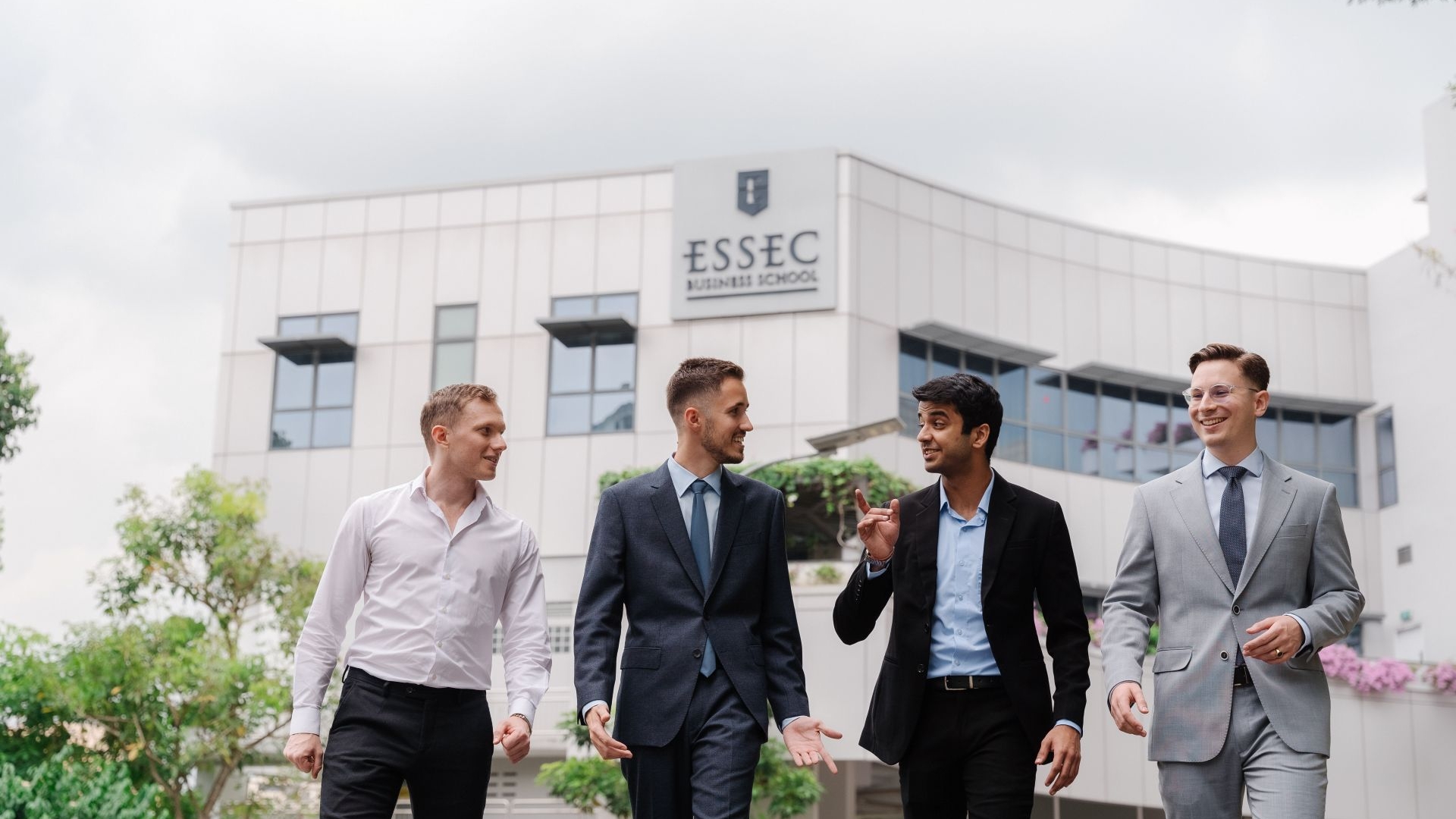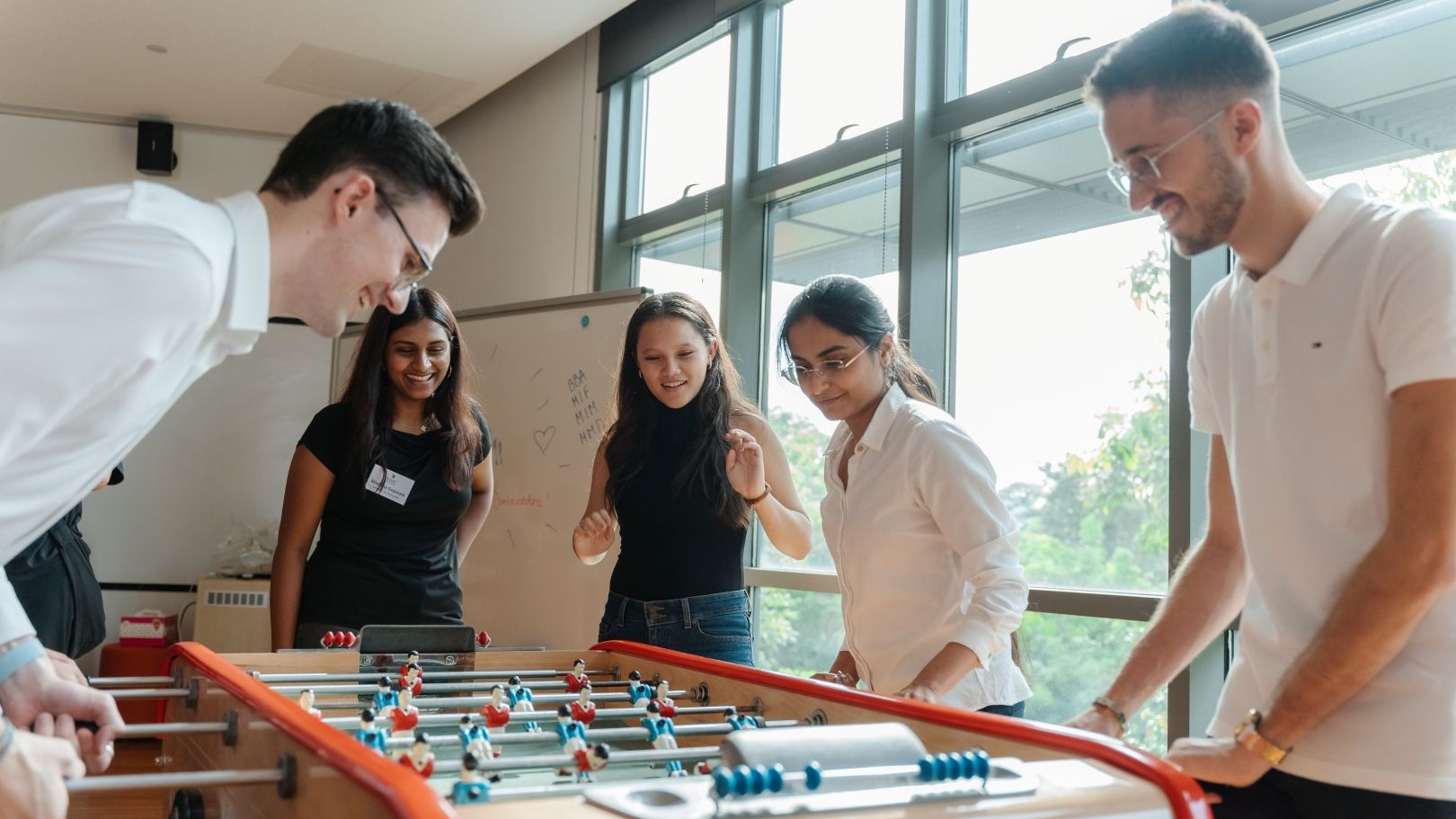ESSEC Master in Strategy & Management of International Business (SMIB) Student Ambassadors Soraya Saint-Marc, Giorgio Zambon, and Ksheera Rangaraja come from different educational backgrounds.
Soraya studied environmental sciences in the Netherlands, Giorgio has an economics degree from Italy, and Ksheera did her undergraduate information technology in India.
What they have in common is that their undergraduate curriculum was extremely theoretical—worlds apart from what they have experienced at ESSEC Asia-Pacific.
An Emphasis on Application
One of the first things they noticed about the ESSEC Asia-Pacific campus is the emphasis on learning by doing.
“For example, during the strategy class, we were asked to read a case study and then explain how we would handle it and the factors we would consider using what we had learned,” Ksheera, who comes from India, explains.
She continues: “And in our entrepreneurial mindset class, we worked on setting an asymmetrical bet (where potential gains are greater than the possible losses) in our own lives to grasp better the concept.”
Soraya, a French national, adds that many group projects, some of which, like the Asian Strategy Challenge (ASC), allow students to work directly on “impactful projects with real clients.”
While her team is working with the super app Grab, Ksheera’s group is paired with Newcastle University.
Both of them view these opportunities as valuable ones where they can learn the ropes of consulting and gain insights into new industries.
New Cultures and Lessons on Asia
Coming from schools comprising primarily locals, they also appreciate ESSEC Asia-Pacific’s diversity.
“The class has a balanced mix of people from Asia and Europe, as well as from different majors and industries,” Ksheera says. “It helps to have so many different perspectives when we discuss case studies.”
These perspectives and understanding of the global world are only enhanced by how classes at ESSEC Asia-Pacific draw on examples from the region.
“Compared to the ESSEC Cergy campus, there is far more focus on teaching with an Asian-centric lens,” Soraya, who did her first semester in Paris, shares, noting that this is an advantage for those who wish to start careers in the region.
Personalized Attention
But one of the biggest boons of being at ESSEC Asia-Pacific? Connecting with faculty and staff.
For Soraya, it is a benefit that professors have such an international background. Her cross-cultural course, for instance, was taught by a French professor who had lived across Asia.
“He was able to use his personal experiences to help us understand the importance of being able to communicate well with people from different backgrounds and cultures,” she recalls.
She was also impressed by Professor of Practice Entrepreneurship & Innovation Julien Salanave.
She says that having spent over a decade as a serial entrepreneur across Asia, Europe, and North America, Salanave brought valuable insights that made his classes “very practical” and highly engaging.
Giorgio believes that the depth of interactions with ESSEC faculty and staff is only magnified by the size of the ESSEC Asia-Pacific campus.
With fewer students, the faculty or staff-to-student ratio is higher, allowing for more personalized support.
In his experience, he says, “It’s true that the career services team is highly available, and whenever students reach out, they are strongly committed to helping us find internships!”
“I would 100 percent recommend students come to Singapore. It’s a once-in-a-lifetime opportunity to experience the region, the country, and to do so in an excellent educational environment,” he concludes.
RELATED POSTS
Stepping Out Of Your Comfort Zone: Why It Matters At Business School
How embracing new challenges accelerates personal and professional growth.
From Singapore to the World: Navigating Your Global Career Path
Beyond a degree, ESSEC Asia-Pacific is your launchpad for a truly global career, equipping you with a powerful international network of 71,000 alumni…
How ESSEC Asia-Pacific Builds A Sense Of Community
From orientation to cultural nights — how students feel supported and included.
Making Friends Across Cultures: Lessons From A Diverse Classroom
Stories and tips on navigating intercultural friendships at ESSEC Asia-Pacific.
Your Global Network Starts Now: Why ESSEC Friendships Matter
Beyond the classroom, discover how ESSEC Asia-Pacific cultivates a strong sense of belonging and community for international students, leading to…
How Studying In Asia Changed My Worldview
Reflections from an ESSEC Asia-Pacific international student.








